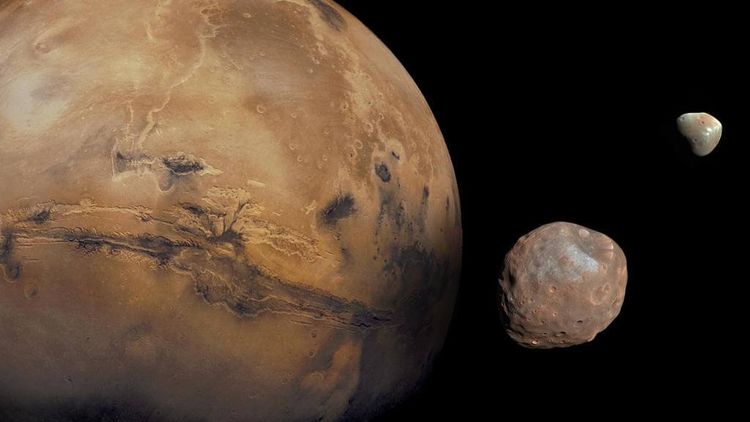Learn About Mars, the Red Planet, With Classroom-Ready ...

From Galileo’s early studies in astronomy to humankind’s first steps on the moon, people throughout the ages have looked to the stars with curiosity and a sense of adventure. But have you ever wondered about one (red) planet in particular: Mars?
Mars is the fourth planet from the Sun in our solar system. Formed approximately 4.5 billion years ago, the surface of the planet is orange-red, covered in craters from meteor impacts and volcanic eruptions, and may have even been home to oceans of water! Humans have been exploring Mars remotely by spacecraft for decades to help us learn about the geology of the planet and if it has ever, or could in the future, support life. Starting in the 1960s and 70s, government space programs across our world have been using probes and orbiters to learn about this mysterious planet.
In 2020, NASA’s Mars Rover Mission sent Perseverance, a rover, and Ingenuity, a small robotic helicopter, to Mars with the goal of revealing information about the possibility of past life on Mars. While we haven’t found proof of Martians yet, this latest mission has captured the first sounds transmitted from Mars. It’s also led to a major, exciting discovery on the planet’s surface that could point to the existence of microbial life from billions of years ago: the Cheyava Falls rock.
Learn more about scientific discoveries from Mars, and what the not-so-distant future might look like if people do colonize this far off planet, with the classroom-ready resources and activities below.
Jump to article sections:
Learn About Mars: The Red PlanetGrades K-2
Welcome to Mars! In this clip from Ready Jet Go!, Jet’s family and friends explore the surface of Mars to fill out an intergalactic guide book. The gang learns that on Mars, there is not enough atmosphere to hold water, the red dust of the planet doesn’t contain life, and the temperature is far too cold to support life.
Grades 3-5
This DragonflyTV segment introduces NASA roboticist Dr. Ayanna Howard. Her job is to use artificial intelligence (AI) to build robots that can travel into space and other hazardous locations. In this segment, she discusses her work on a rover for use on Mars.
Grades 3-8
NASA is sharing what winter is like on Mars. According to the space agency– the photos captured Mars’s changing landscape due to winter show mega-dunes with carbon dioxide frost and ice on them. The frost makes the dunes and other parts of Mars’ landscape look darker. Mars also experiences cube-shaped snow that accompany sub-zero temperatures. In some areas– the red planet can get as low as negative 190 degrees fahrenheit (negative 123 degrees celsius) during winter.
Grades 6-12
Elon Musk’s SpaceX program proposes that 100 people could be sent to colonize Mars within 10 years. What might that colony look like?
Grades 9-12
While Earth might be the only current confirmed source of life in our solar system, it might not stay that way for long thanks to the Mars 2020 Rover Mission as well as the Europa Clipper Mission.
Grades PreK-3
Almost every child has questions about space. What happens to the sun at night? Why does the moon change shape? What are shooting stars? How do astronauts live in space? Is there life out there? Here are ten books that can help answer their questions… and perhaps inspire new ones!
Grades PreK-5
Space is a fascinating and sometimes confusing topic for kids. Stargazing provides a great opportunity to start exploring the cosmos! Take your child’s curiosity further with a few simple ways to learn about the wonders of astronomy together.
Grades K-2
Hop in and game on with Jet and his friends by designing and building rovers built to handle a series of challenging terrains and environmental conditions with this Rover Maker game.
Grades 3-8
NASA faced a huge challenge when they safely landed the Mars Exploration Rovers on the surface of Mars. Can you design a capsule that would protect a raw egg dropped from several stories to the ground? Would your egg survive? See what Science-U campers created and try it yourself with step-by-step instructions and guided scientific questions.
Grades 6-12
SpaceX, a private aeronautics company, wants to colonize the Red Planet. Could this mean today’s youth might be the first humans in history to live on Mars? Many technical and ethical challenges lie ahead in response to this question. Using the invention process, students will explore solutions to some of the problems facing the Mars mission and decide whether or not they are on board with expanding humankind’s reach in the universe.
For even more games and educational resources for young learners, go to the Exploring Space at Home Collection on PBS KIDS for Parents.









































